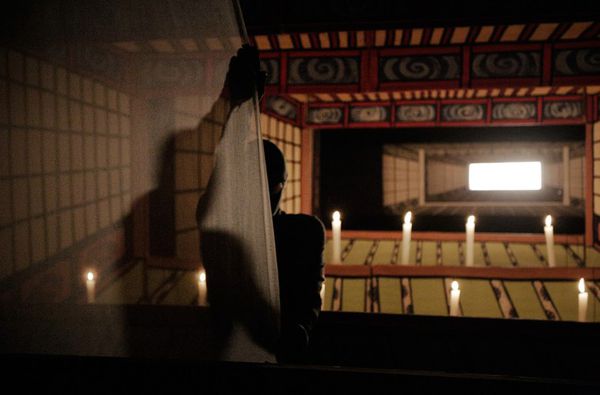Eye For Film >> Movies >> Haiku On A Plum Tree (2016) Film Review
Haiku On A Plum Tree
Reviewed by: Jennie Kermode

In 1938, filmmaker Mujah Maraini-Malehi’s grandparents migrated from Italy to Japan. Five years later, when they refused to declare their loyalty to Mussolini, they were labelled enemies of the Axis powers and placed in an internment camp. Now, before it is too late for her widowed grandmother to participate, Maraini-Malehi has set out to tell their story, explore its meaning and look for means of reconciliation.
Short and carefully structured, this film is very much in the haiku mould, juxtaposing as it does the idea of Japan as the beloved land with the dissonant experience of life in the camps. This proves more important to the unfolding story than the juxtaposition between Italian and Japanese cultural expectations, the latter having been familiar enough to the filmmaker’s grandfather that he was able to take advantage of them and win some respect through a single dramatic act. Each different section of the story is framed, literally, with simple animation which creates the sense of passage through rooms in a traditional Japanese house or passage through cards styled to create that impression and often used to present modern haiku. It’s a device that feels overly fussy and doesn’t really suit the pace or tone of the film, but it does complement its form.

This formal structure contrasts, in itself, with the emotive subject matter, which is often distressing despite being presented calmly, and which clearly still takes a toll on Maraini-Malehi’s grandmother. Her account – parts of which are filled in by her daughter, who also talks about the long-term impact of the incarceration – is illustrated with archive material, family photographs and contemporary footage, providing a chain of evidence to connect past and present. The story of the camps is not just one of ill-treatment but is extensively focused on poverty and hunger. The grandmother’s face speaks to the legacy of malnutrition, with the kind of hollows that never really go away. Her experience is complicated by a sense of culpability. Though they did it for noble reasons, still she is aware that she and her husband brought their fate upon themselves.
This testimony from a part of the Second World War that is often forgotten in the West is a valuable contribution to the records and will be interesting to scholars and those with personal connections to these events. It’s less successful as a film for general consumption. It doesn’t flow well and parts of it are too slow whilst others skirt quickly over important subjects, perhaps due to a shortage of material. Maraini-Malehi’s lack of experience shows, but as a first timer she could have done a lot worse, and she’s succeeded in creating a documentary of lasting importance.
Reviewed on: 02 Mar 2018















